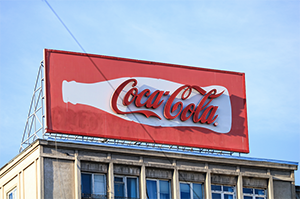
Billboards in the 90s
OOH advertising has existed since the earliest civilizations and has made massive developments since then. Billboard advertising that we know of today traces back to the 19th century with the first official billboard lease in 1867. There were many improvements for billboards in the transition to the 20th century making them more convenient to mass produce. Notably, billboards became standardized to fit a uniform size where an individual billboard ad could be placed anywhere in the country.
The 1990s gave way to many new types of advertising formats such as billboards, street furniture, transit, alternative media, cinema, and digital place-based screens.
The design trends for billboards in this period were hand painted and computer printed materials. As the decade progressed with more advanced digital technology, hand-painted boards were replaced with computer painted outdoor advertising.
The internet boom had a large influence on design trends and aesthetics in the 1990s. Previously, advertising campaigns focused on selling products, but the focus changed to creating brand awareness and solving problems. The Internet created an online market that many advertisers began to tap into as there was an increasing audience for it. Additionally, the 90s capitalized on design trends that already existed and brought them back in their own spin while also seeing the rise of futuristic design with aesthetics rooted in technology.
A top advertising campaign from the 90s was the successful “Got Milk?” campaign. This campaign set a new standard for the power and impact of advertising.
The 90s will be forever cemented in the minds of the next generation as a time of rich pop culture moments as well as the arrival of the internet age. Even today, nostalgia marketing is strong as there is a resurgence of 90s and Y2K aesthetics in advertising.
Visit BillboardsIn to build your campaign today and choose the perfect location. We can even help you design your ad!

